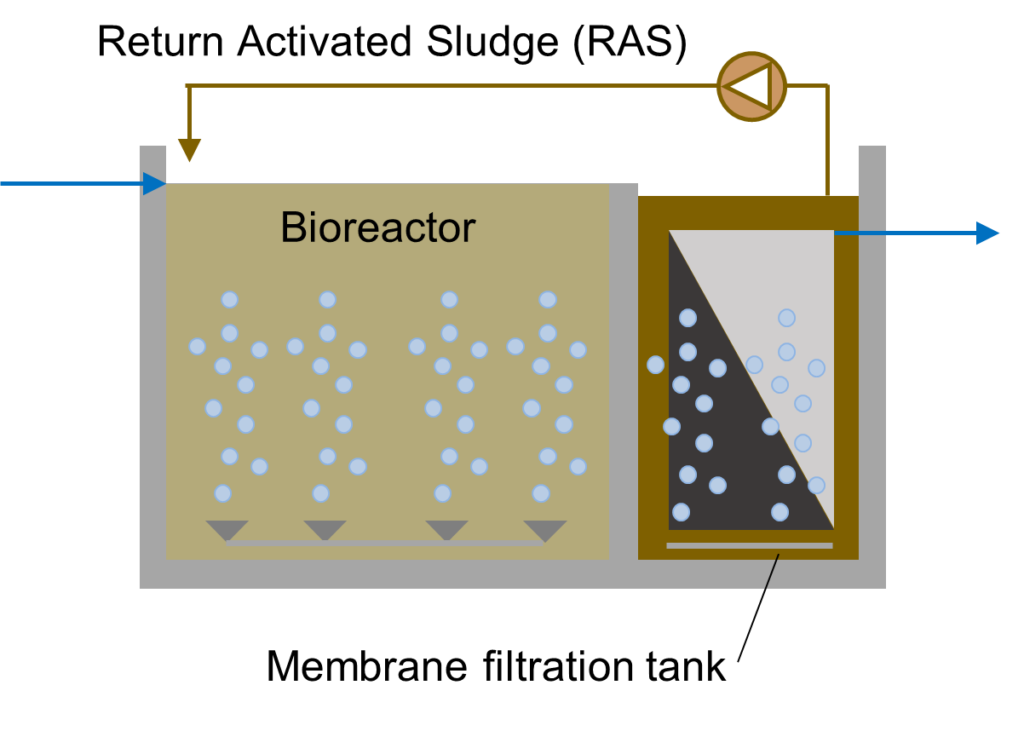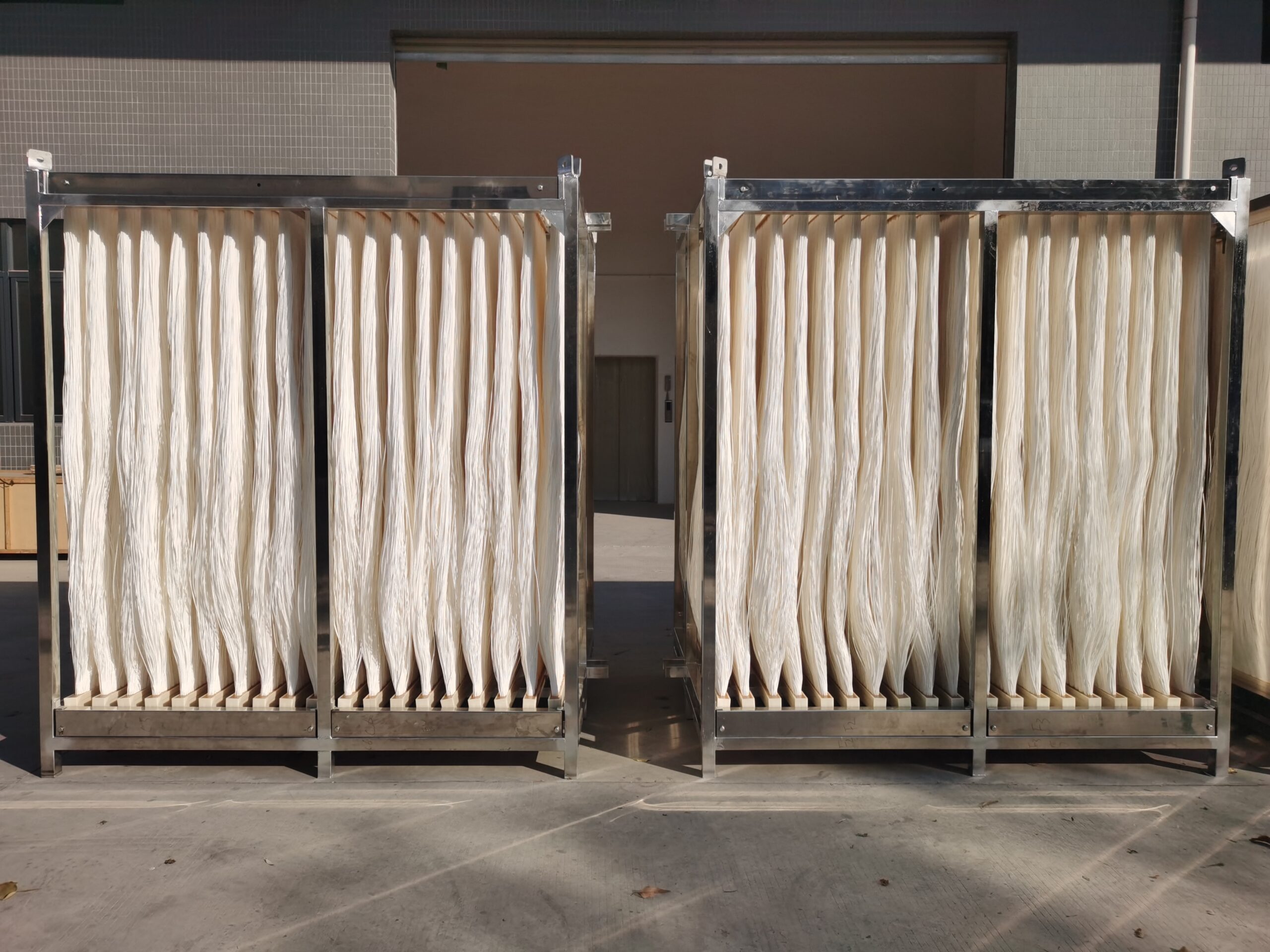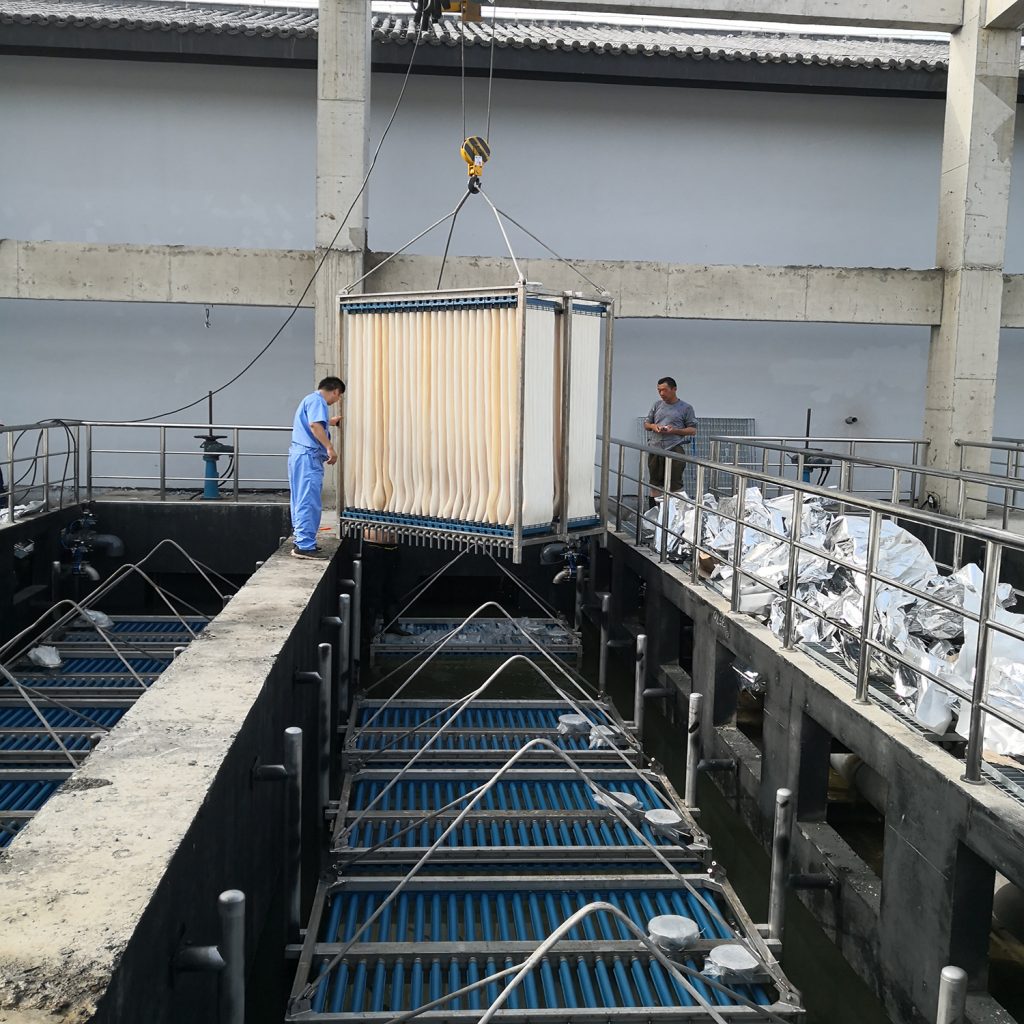The Science Behind Membrane Bioreactor: How It Works and Why It’s Effective
The Science Behind Membrane Bioreactor: How It Works and Why It’s Effective
Blog Article
Membrane Layer Bioreactors Discussed: Reliable Solutions for Clean Water
Membrane layer bioreactors (MBRs) have actually emerged as an advanced service for resolving the pushing obstacles of wastewater therapy - Membrane Bioreactor. By integrating organic procedures with innovative membrane filtering, MBRs not just boost the high quality of treated water yet also decrease the spatial requirements of therapy facilities.

What Are Membrane Layer Bioreactors?
Membrane bioreactors (MBRs) are advanced wastewater therapy systems that incorporate organic destruction procedures with membrane filtering modern technology. This combination enables the reliable elimination of impurities from water, making MBRs a preferred selection in various applications, including metropolitan wastewater therapy and industrial effluent management.

Among the vital advantages of MBRs is their capability to generate high-grade effluent, usually ideal for reuse in irrigation or commercial procedures. Additionally, MBRs require a smaller sized footprint contrasted to conventional therapy systems, making them excellent for city setups where space may be restricted.
Moreover, MBRs can successfully deal with varying influent lots and are less vulnerable to the results of hazardous shocks. These qualities add to their growing appeal as a lasting option for resolving the enhancing need for tidy water while minimizing ecological impacts.
Just How Membrane Bioreactors Work
While the procedure of membrane layer bioreactors (MBRs) may appear facility, it basically revolves around the harmony in between biological processes and membrane layer filtering. MBRs integrate an organic treatment procedure, generally turned on sludge, with a membrane layer separation device to deal with wastewater effectively.
In an MBR system, wastewater is very first introduced into a bioreactor where microbes break down natural issue and other impurities. The organic activity lowers the focus of pollutants while promoting the growth of biomass. Following this biological therapy, the blended liquor undergoes membrane filtering, which can be microfiltration or ultrafiltration, depending upon the wanted effluent quality.
The membrane layers work as a physical obstacle, permitting water and small solutes to pass while retaining put on hold solids and larger particles. This makes it possible for the system to maintain a high concentration of biomass within the activator, enhancing the therapy efficiency.
Furthermore, the continuous splitting up of cured water from the biomass promotes a portable layout and lessens the footprint of the treatment center. In general, the mix of biological destruction and membrane filtering in MBRs leads to trustworthy and efficient wastewater therapy, making certain top notch effluent ideal for various applications.
Benefits of MBR Innovation
Among the essential advantages of membrane bioreactor (MBR) modern technology is its capacity to produce premium effluent with a dramatically lowered footprint contrasted to conventional wastewater treatment approaches. MBR systems successfully integrate organic treatment and membrane layer filtering, leading to premium removal of pollutants, including suspended solids, pathogens, and raw material. This view it capability results in effluent that commonly meets or goes beyond strict governing criteria for reuse and discharge.
Furthermore, MBR technology permits for higher biomass focus, which boosts the therapy performance and decreases the called for activator volume. This compact style is specifically helpful in urban locations where area is limited. The functional adaptability of MBR systems also indicates they can adapt to differing influent qualities and flow prices, making them appropriate for a wide variety of applications.
In addition, the minimized sludge production linked with MBR processes adds to lower functional and upkeep expenses. The membranes function as a physical barrier, decreasing the danger of obstructing and making it possible for longer functional durations between cleansing. On the whole, the benefits of MBR innovation make it an appealing option for sustainable wastewater therapy, attending to both ecological problems and the demand for reliable resource administration.
Applications of Membrane Bioreactors
With their adaptability and performance, membrane layer bioreactors (MBRs) find applications across various industries, including municipal wastewater therapy, industrial procedures, and also water recovery. In community settings, MBRs supply a portable remedy for dealing with wastewater, effectively removing pollutants while simultaneously producing premium effluent that meets stringent governing criteria. This makes them particularly ideal for areas with limited space.
In industrial applications, MBR technology is made use of for treating procedure water, specifically in sectors such as food and beverage, drugs, and petrochemicals. These markets gain from MBRs' capability to take care of high natural tons and their effectiveness in recovering beneficial sources from wastewater, such as nutrients and water.
Moreover, MBRs play an important function in water recovery initiatives, enabling the reuse of treated wastewater for watering, industrial processes, or perhaps as drinkable water after more treatment (Membrane Bioreactor). Their effectiveness in getting rid of pollutants and pathogens makes them a dependable choice for guaranteeing water top quality in numerous reuse applications
Future of Water Therapy Solutions
The future of my blog water treatment services is poised for transformative improvements driven by technical innovation and enhancing ecological understanding. As global water scarcity becomes a pressing problem, brand-new approaches, including great post to read membrane layer bioreactor (MBR) systems, are set to play a crucial function in boosting the efficiency and sustainability of water therapy procedures.
Emerging technologies such as expert system and artificial intelligence are expected to optimize therapy operations, permitting real-time monitoring and anticipating maintenance. This will certainly boost the overall integrity and effectiveness of water treatment centers. Furthermore, innovations in membrane products, such as graphene and nanofiltration, assure to increase permeation prices and lower fouling, leading to lower power usage and functional expenses.
In addition, the integration of eco-friendly energy sources right into water therapy plants will add to greener methods. The round economic climate design will likewise acquire traction, motivating the healing of beneficial resources from wastewater, such as nutrients and energy.
Verdict

Membrane bioreactors (MBRs) have arised as an innovative service for resolving the pushing challenges of wastewater therapy. By incorporating organic processes with advanced membrane purification, MBRs not just boost the high quality of treated water but likewise minimize the spatial demands of therapy facilities.One of the essential advantages of membrane layer bioreactor (MBR) technology is its capacity to generate high-quality effluent with a considerably minimized impact contrasted to standard wastewater treatment techniques.With their adaptability and effectiveness, membrane layer bioreactors (MBRs) discover applications across numerous fields, including metropolitan wastewater therapy, commercial processes, and even water recovery.In conclusion, membrane bioreactors represent a substantial improvement in wastewater treatment technology, integrating organic processes with effective membrane layer filtering to produce premium effluent.
Report this page